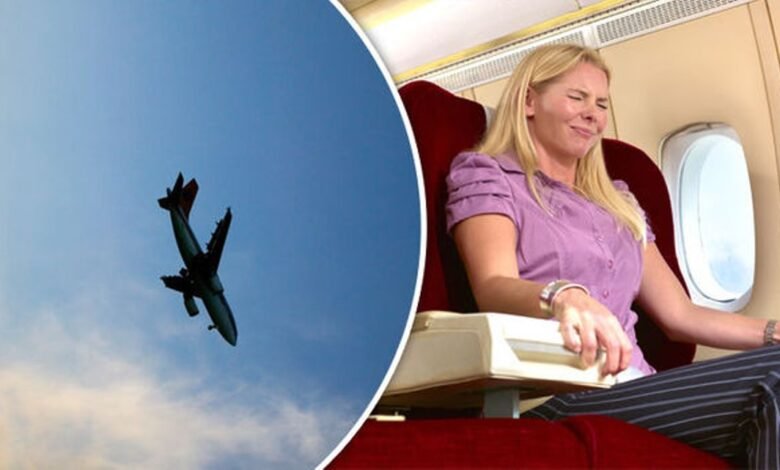
When it involves air tour, protection is paramount for passengers in search of peace of thoughts at some point of their adventure. Among the diverse factors contributing to aviation protection, the design and placement of Airplane Seat play a important function, specifically within the event of a crash. Understanding which aircraft seat is the most secure can provide passengers with precious insights and self assurance as they embark on their flights.
In this article, we delve into the subject of aircraft seat protection, exploring the elements that determine the safest seat inside the event of a crash. From analyzing crash statistics to information seat materials and structural integrity, we goal to offer readers with comprehensive insights into this important component of air journey. Join us as we debunk common myths, observe research findings, and shed light at the traits that make sure airplane seats stand out in phrases of safety.
This Airplane Seat is the Safest in the Event of a Crash
Understanding Safety Ratings of Airplane Seats
Safety is paramount in aviation, and every component of an aircraft, including seats, undergoes rigorous testing to ensure compliance with safety standards. The Federal Aviation Administration (FAA) and other regulatory bodies around the world set stringent guidelines for airplane seat design and performance. Factors such as crashworthiness, fire resistance, and occupant protection contribute to the safety ratings of airplane seats.
Research on Safest Airplane Seats
Numerous studies have been conducted to identify the safest Airplane Seat on an airplane in the event of a crash. Researchers analyze various factors, including crash data, seat materials, and structural integrity, to determine which seats offer the highest level of protection to passengers. While specific findings may vary depending on the study’s methodology, certain trends and characteristics consistently emerge.
Characteristics of the Safest Airplane Seat
Location within the Aircraft
Seats located near emergency exits or over the wings are often considered safer due to their proximity to primary evacuation routes and structural reinforcements. Passengers seated in these locations may have quicker access to emergency exits, facilitating a faster and more orderly evacuation in the event of an emergency.
Seat Materials and Design
The materials and construction of airplane seat play a crucial role in determining their safety performance during a crash. Airplane Seat designed with advanced materials such as high-strength alloys, impact-absorbing foams, and energy-absorbing mechanisms can better withstand forces exerted during impact, reducing the risk of injury to occupants.
Impact of Seat Orientation
The orientation of airplane seats relative to the direction of travel can influence their safety characteristics during a crash. Seats facing forward or with a slight recline are generally considered safer, as they distribute impact forces more evenly across the body and minimize the risk of whiplash injuries compared to rear-facing seats.
Structural Integrity and Restraint Systems
Seats equipped with sturdy structural frames and secure restraint systems, such as three-point harnesses or lap belts with shoulder harnesses, provide enhanced protection to occupants during sudden deceleration events. Integrated headrests, armrests, and footrests can also contribute to occupant stability and reduce the risk of secondary injuries caused by impact or turbulence.
Popular Airplane Seat Myths Debunked
Despite advancements in aviation safety, several myths and misconceptions persist regarding the safest airplane seat. Common beliefs, such as sitting at the back of the plane is safer or choosing a window seat offers better protection, are often unfounded and unsupported by empirical evidence. Debunking these myths through scientific research and data analysis helps passengers make informed decisions when selecting their seats.
Airlines’ Perspective on Seat Safety
Airlines are committed to ensuring the safety and well-being of their passengers through strict adherence to regulatory requirements and continuous improvement initiatives. They invest in state-of-the-art seat designs, conduct regular maintenance checks, and provide comprehensive safety training to cabin crew members. By prioritizing passenger safety, airlines enhance trust and confidence among travelers, fostering a positive flying experience.
Passenger Behavior and Seat Safety
Pre-flight Preparation
Passengers should familiarize themselves with the aircraft’s safety features and procedures by paying attention to pre-flight safety briefings and reading safety information cards provided in the seat pocket. Understanding how to fasten and adjust seatbelts properly is crucial, as improperly secured seatbelts can increase the risk of injury during turbulence or a crash.
Seat Selection and Placement
When selecting seats, passengers should consider factors such as proximity to emergency exits, structural reinforcements, and potential obstructions that may hinder evacuation routes. Seats located near emergency exits offer easy access to escape routes and are often considered safer during emergencies. However, passengers occupying these seats must be willing and able to assist with evacuation procedures if required.
Following Instructions
Passengers must follow instructions from the flight crew, especially during critical phases of flight such as takeoff, landing, and in the event of an emergency. Ignoring safety instructions or attempting to retrieve personal belongings during an emergency evacuation can impede the evacuation process and endanger lives.
Remaining Calm and Alert
In the event of an emergency, passengers should remain calm and avoid panicking, as panicked behavior can hinder the ability to follow instructions and impede the evacuation process. Maintaining situational awareness and listening for announcements from the flight crew can help passengers respond effectively to changing circumstances and ensure their safety.
Assisting Others
Passengers should be prepared to assist fellow travelers, especially those with mobility limitations, children, or individuals in distress, during an emergency evacuation. Offering reassurance, helping others locate emergency exits, and assisting with the deployment of evacuation slides can contribute to a swift and orderly evacuation process.
Evacuation Procedures
Passengers should familiarize themselves with emergency evacuation procedures, including the operation of emergency exits, evacuation slides, and life-saving equipment. Practicing the “brace position” as demonstrated in safety briefings can reduce the risk of injury during a crash landing by minimizing the impact forces on the body.
Read More: Unsecure Page Error: 5 things to try if you get this warning
Conclusion
Even as the perception of the “most secure” plane seat may additionally vary depending on factors including seat location, layout, and passenger conduct, it is crucial for travelers to prioritize protection measures at some stage in air travel. By information the standards of aviation protection, debunking myths, and last vigilant at some stage in flights, passengers can enhance their chances of surviving and minimizing injuries within the not likely occasion of a crash.
Ultimately, the collaboration among regulatory government, airways, and passengers is essential in making sure a secure and secure flying enjoy for all. As technology advances and aviation requirements evolve, continuous efforts to enhance seat design, implement effective safety protocols, and teach passengers will further decorate air travel protection. With a collective commitment to prioritizing safety, the skies continue to be a reliable mode of transportation for tens of millions of passengers global.
FAQs
Are seats near emergency exits always the safest?
While seats near emergency exits offer easy access to escape routes, other factors such as crash dynamics and seat design also influence safety.
Do window seats provide better protection during a crash?
The notion that window seats are safer than others is a myth; seat safety depends on multiple factors beyond the seat’s location.
What should passengers do to maximize seat safety during a flight?
Passengers should pay attention to pre-flight safety briefings, fasten seatbelts properly, and remain alert to instructions from cabin crew members.
Are newer aircraft equipped with safer seats?
Modern aircraft often feature advanced seat designs and materials, contributing to enhanced safety compared to older models.
How do airlines ensure seat safety for passengers?
Airlines invest in rigorous testing, maintenance protocols, and crew training to uphold safety standards and prioritize passenger well-being.











